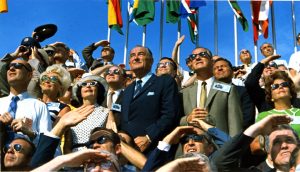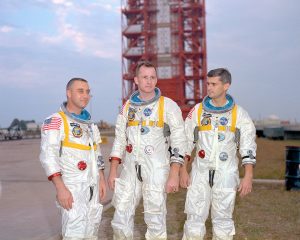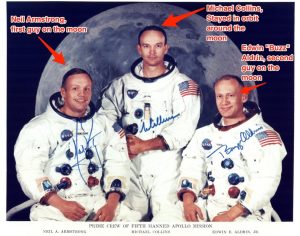In 1961, President John F. Kennedy put a monumental goal before Congress:
“I believe that this nation should commit itself to achieving the goal, before this decade is out, of landing a man on the moon and returning him safely to the Earth,” Kennedy said. “No single space project in this period will be more impressive to mankind, or more important for the long-range exploration of space; and none will be so difficult or expensive to accomplish.”
Indeed, it took eight ye ars to reach the moon after that, and NASA burned through $25.4 billion dollars before the Apollo program was finished. But on July 20, 1969, as people throughout the world gathered around fuzzy television sets, astronaut Neil Armstrong announced: “the Eagle has landed.”
ars to reach the moon after that, and NASA burned through $25.4 billion dollars before the Apollo program was finished. But on July 20, 1969, as people throughout the world gathered around fuzzy television sets, astronaut Neil Armstrong announced: “the Eagle has landed.”
Here’s how the US made it to the moon 49 years ago.
The first manned Apollo mission, Apollo 1, ended in tragedy in 1967. All three crew members died in a fire inside their capsule during a pre-launch test on the launch pad.

From left, Apollo 1 astronauts Virgil “Gus” Grissom, Edward White, and Roger Chaffee in front of their Saturn 1 rocket at the Kennedy Space Center in Florida. NASA
NASA said design changes after the accident made the Apollo spacecraft safer for journeys to the moon.
By July 1969, NASA astronauts had flown to the moon’s orbit twice, and the crew of Apollo 11 was ready to land on the lunar surface.

From left to right: Commander Neil Armstrong, Command Module Pilot Michael Collins, and Lunar Module Pilot Edwin (Buzz) Aldrin Jr. NASA

